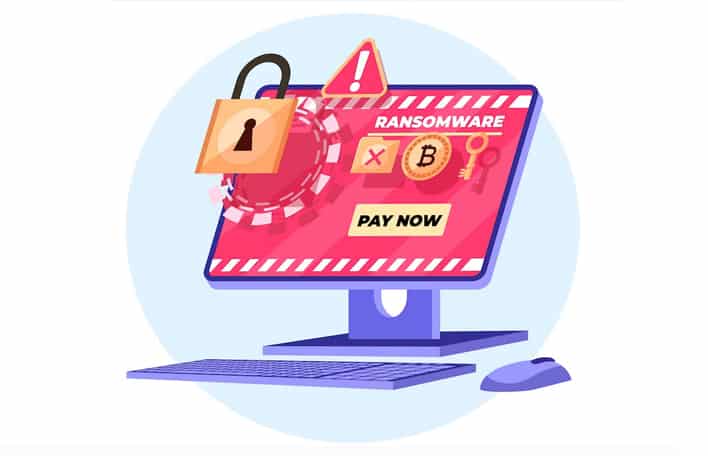
Protect Cryptocurrency from Ransomware attack: Securing cryptocurrency is highly important in light of the growing risk of ransomware attacks. This in-depth guide will walk you through the crucial steps you need to take to protect your digital assets. Consider securing your trading strategy with an advanced automated bot in the same way that you would protect cryptocurrencies from ransomware attacks.
Best Practices for Securing Cryptocurrencies
It is essential to keep up with best practices when protecting your cryptocurrency holdings from the growing risk of ransomware. You may considerably lower your risk of falling victim to a ransomware attack by implementing the appropriate security measures on your system. The following are some basic steps to keep in mind:
Choosing a Secure Crypto Wallet
Choosing a cryptocurrency wallet that is dependable and secure is the first step in the process of securing your digital assets. A wide variety of wallets are available, including those made of hardware, software, paper, or stored online. Before making a decision, it is vital to thoroughly search the safety features and track record of the wallet. To further increase the safety of your wallet, you should also ensure that it is equipped with strong encryption and that you use complicated passwords.
Implementing Multi-Factor Authentication (MFA)
It is strongly advised that you use multi-factor authentication to provide additional protection to your account. To access their cryptocurrency accounts, users need to submit MFA with several different kinds of identity. Enable multi-factor authentication on widely used crypto platforms by following the instructions given, and be sure to select authentication factors that are both unique and robust to maximize the efficiency of this security precaution.
Regularly Updating Software and Firmware
The safety of your cryptocurrency holdings needs to maintain the most recent versions of your cryptocurrency software, operating system, and cryptocurrency wallet. The developers release regular updates to resolve security flaws and improve overall protection. If you want to maintain a strong defense against ransomware attacks, you should routinely check for updates and make sure that you install them as soon as possible.
Creating Secure Backups
Having safe backups of your cryptocurrency is another important step in the process of protecting it. Create backups of your cryptocurrency wallet and the data linked with it regularly to reduce the likelihood of losing your data. For an additional layer of protection, think about encrypting your backups locally or on the cloud. Put your backups away in a secure spot, unaware of any possible dangers.
Using Cold Storage Solutions
A very safe way to store cryptocurrency is through cold storage. It requires you to keep your private keys offline, away from any devices connected to the internet. Hardware wallets and computers with airtight security gaps are two common types of cold storage. If you set up and use cold storage correctly according to the guidelines, you can be confident that your crypto assets will be protected against ransomware attacks.
Educating Yourself about Phishing and Social Engineering Attacks
Educating yourself about phishing and social engineering attacks is necessary to strengthen your protection against ransomware threats that target your cryptocurrency. Cybercriminals often use these deceitful strategies to dupe unsuspecting victims into divulging private information or allowing illegal access to their cryptocurrency accounts. You will be able to defend yourself better if you understand and can recognize these approaches. Here is the information that you need to know:
Phishing and Social Engineering Defined
Phishing is the fraudulent use of emails, texts, or websites to get sensitive information like passwords or private keys. Manipulating people into exposing personal information or doing acts that endanger their security is an example of social engineering. Both methods make use of human psychology and trust to get access to vulnerable areas.
Recognizing Common Phishing Techniques
Learn the most popular phishing tactics used in crypto and become familiar with them. Phishing emails that are popular cryptocurrency exchanges or wallet providers, fake sites designed to seem like real platforms, and messages asking for quick action or personal information are some examples of these attacks. Look for warning signs such as unusual email addresses, grammatical problems, and generic welcomes. These may all be indicators of a potential scam.
Tips for Avoiding Phishing Attempts
Stay cautious and take preventive actions to avoid phishing attacks. When accessing content from unknown or dubious sources, use extreme caution when clicking on links or downloading files. Verify a website’s validity by double-checking the URL and searching for secure connection signs like “https” and a padlock symbol. Never give up important information or enter your login credentials on websites that you cannot verify or in response to requests that are not sought.
Enhancing Email Security
Ensure the safety of your email accounts by taking the necessary precautions. Enabling two-factor authentication, often known as 2FA, will provide your account with an extra layer of security. You should routinely check your email settings to ensure that your spam filters and other security measures are set up correctly. Be wary of emails that seek immediate action, such as resetting your password or verifying your account, and make sure you independently check their validity before taking any steps based on the information they provide.
Ongoing Vigilance and Education
Be aware of new phishing and social engineering methods. It’s essential to keep track of the latest trends to remain current. Participate in continuous education opportunities from reliable sources, such as blogs and online communities devoted to cybersecurity issues. Participate in groups centered on cryptographic security to broaden your knowledge base and get insight from the experiences of others.
Conclusion
Implementing best practices is necessary in light of the growth in ransomware attacks that target cryptocurrency. You may strengthen your defenses by selecting safe wallets, implementing multi-factor authentication, and being attentive against phishing efforts. Maintain an up-to-date knowledge base, engage in preventative measures, and take other steps to protect the precious crypto assets you own.



